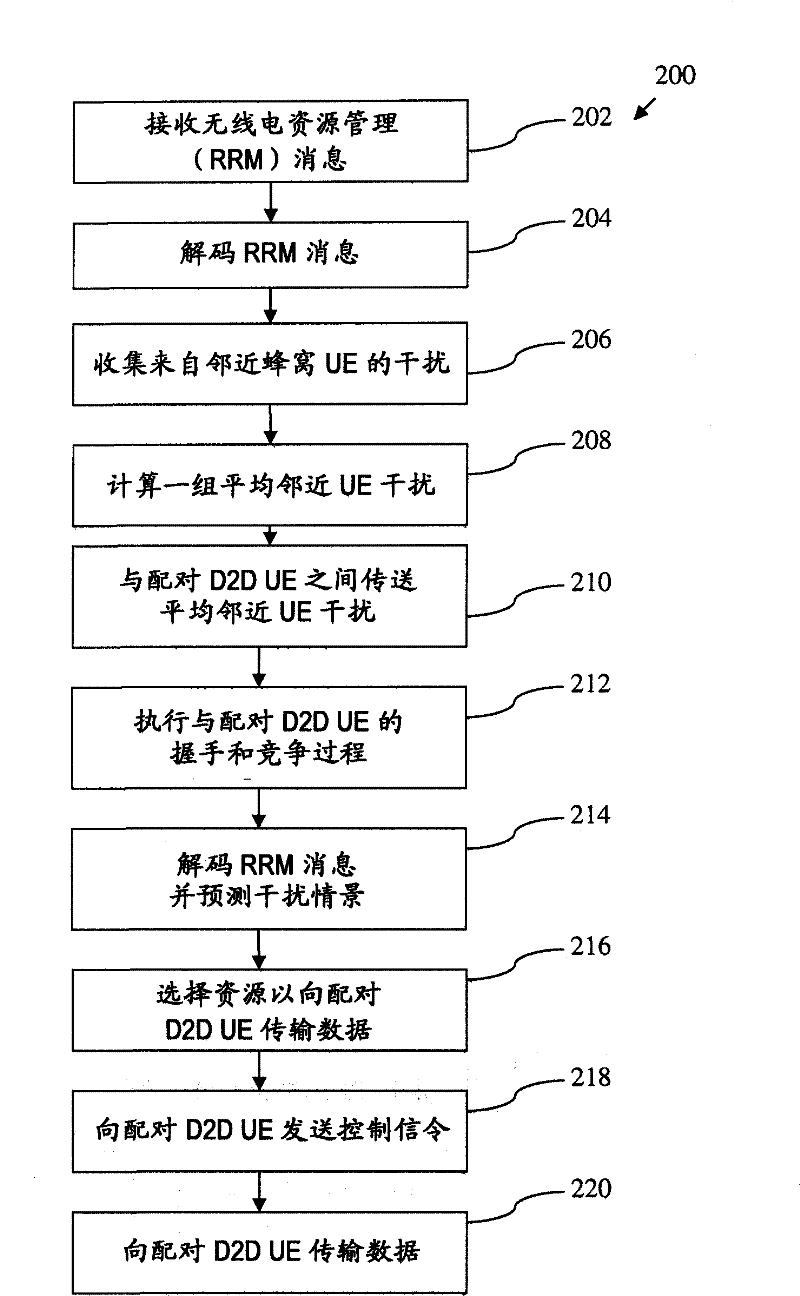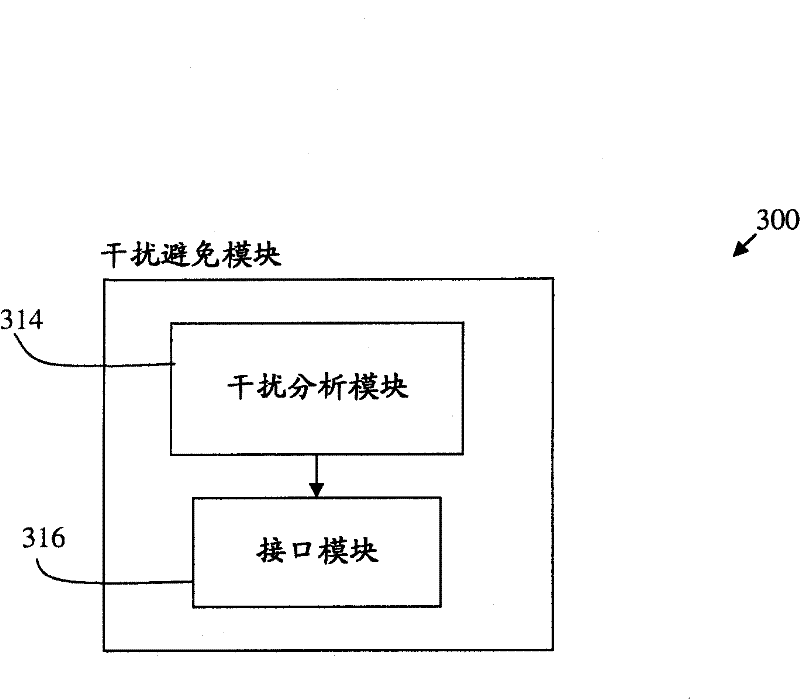Apparatus and method for interference avoidance in mixed device-to-device and cellular environment
A cellular and device technology, applied in the field of interference avoidance devices, can solve problems such as reducing resource utilization efficiency
- Summary
- Abstract
- Description
- Claims
- Application Information
AI Technical Summary
Problems solved by technology
Method used
Image
Examples
Embodiment Construction
[0015] In addition to traditional cellular mode, UEs can also be allowed to operate in D2D mode and can share the same resources as cellular UEs. Additionally, systems such as 3G base stations or similar devices (eg, Node Bs and eNode Bs) can allocate resources to cellular UEs in a dynamic manner. This means that resource allocation may not be accurately predicted based on accumulated knowledge. Therefore, blind interference avoidance methods may not work without any knowledge about any neighboring cell resource allocations. Selecting appropriate resources for D2D UEs to avoid or minimize interference from cellular UEs is directly related to D2D UE performance.
[0016] illustrated with reference to the attached Figure 1 to Figure 6 To best understand example embodiments of the present invention and its potential advantages, like numerals are used for like and corresponding parts in the various drawings.
[0017] figure 1 An example wireless system 100 is shown. Wireless...
PUM
 Login to View More
Login to View More Abstract
Description
Claims
Application Information
 Login to View More
Login to View More - R&D
- Intellectual Property
- Life Sciences
- Materials
- Tech Scout
- Unparalleled Data Quality
- Higher Quality Content
- 60% Fewer Hallucinations
Browse by: Latest US Patents, China's latest patents, Technical Efficacy Thesaurus, Application Domain, Technology Topic, Popular Technical Reports.
© 2025 PatSnap. All rights reserved.Legal|Privacy policy|Modern Slavery Act Transparency Statement|Sitemap|About US| Contact US: help@patsnap.com



